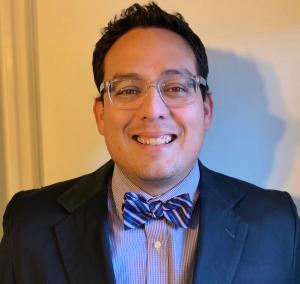Resources

Watching news of ICE arrests and protests in Los Angeles, I cannot help but think how we have got here. The perception of many people who voted for President Trump is that there are too many “illegals” in this country. The reason for this impression, perhaps, is that the Latino presence in some states has increased exponentially in the last few decades. Towns with minimal or no Latino presence now have significant immigrants. The image below demonstrates this change in non-traditional Latino states, where the unprecedented growth has taken place.[i] According to the U.S. census bureau, between 2022 and 2023, the Hispanic population accounted for just under 71% of the overall growth of the United States population.[ii] Hispanics of any race grew to just over 65 million, an increase of 1.16 million (1.8%) from the prior year.[iii] This growth significantly contributed to the nation's total population gain of 1.64 million in 2023.[iv]I live in the small town of Cleveland, TN. I remember first arriving in Cleveland when I was in the first grade. I have been in and out of Cleveland since I was six years old. Back in those days—and aside from my sister—I was the only “Hispanic” kid in the school. No one knew much about me except that I spoke Spanish and that I was learning English. I may not have been fluent in English, but I was good at learning things and came to the classroom with strong abilities. Though I did not have the language skills to keep up with my peers at the beginning, a particular instance let me know that I could do what my peers could do. I remember the teacher gave out a math worksheet on my first day of class that I finished before all my peers. I also got all my answers correct. Later, I steadily learned English and spoke it fluently within a year. In fact, I spoke English with a southern accent. One time, my parents recorded a greeting to send to my grandmother on a cassette tape. When I visited my native Honduras in the late 1990s, my sister and I found the exact cassette tape with the recording on it. When we listened to it after all those years, we laughed because we had a thick southern accent. I am now in my 40s, and the school system has changed. There are many more children of Latin American descent, as well as other heritages. My son’s middle school has a lot of Hispanic students. He played soccer on his team with children whose parents were 1st generation immigrants of Argentine, Chilean, Dominican, Honduran, Guatemalan, and Mexican heritage (among many non-Latin American backgrounds, of course). He would sometimes come up to me and ask me questions about what certain Spanish words meant. Here I am, nearly forty years after I first arrived in Cleveland and things have changed in this small town. But even though all the children I have met here have arrived through the proper channels or are born U.S.-citizens, there is a strong anti-immigrant sentiment in my community. This is xenophobia: the dislike of or prejudice against people from other countries. Just because a person is brown, it does not mean that they were or have been “illegal.” Seeing ICE arrest U.S. citizens even after providing proper ID is a clear sign of racial profiling by those who are supposed to keep us safe. Seeing the military deployed at protests is a politicization of the military. The way that these politics are working out makes me wonder if brown people will ever be perceived as true U.S. citizens and equal. The Latino community has increased exponentially. It is nothing to fear. And even if one day they were to become a majority in the U.S., like the case of Blacks in South Africa, it appears they would still be a minority in terms of economics and/or power. I am a Christian and there are two important elements of faith that are important for us. The first is hospitality as a qualifier for leadership in the local church (1 Peter 4:9; 1 Timothy 3:2; Titus 1:8). I would also argue that it is a mark of a true Christian and a Spirit-filled life (Hebrews 13:2). The other element is compassion. If we remember the story of the Good Samaritan (Luke 10), good will and compassion extend beyond cultural, ethnic, racial, socio-economic, and nationalistic barriers. The radical nature of the Samaritan’s aid to the Hebrew man cannot be understated. The immigrant—whether legal or “illegal,” documented or undocumented—is our neighbor. We must now consider what it means for them to be our neighbor and what hospitality requires of us. Notes & Bibliography[i] US Census Bureau, “Percentage Change in the Hispanic or Latino Population by Country: July 1, 2022 to July 1, 2023,” https://www.census.gov/library/visualizations/2024/comm/hispanic-population-change.html, last accessed June 19, 2023.[ii] US Census Bureau, “New Estimates Highlight Differences in Growth Between the U.S. Hispanic and Non-Hispanic Populations,“ June 27, 2024, https://www.census.gov/newsroom/press-releases/2024/population-estimates-characteristics.html (last accessed June 5, 2025).[iii] Ibid.[iv] Ibid.

Imagine quickly stepping out for a coffee break between classes. It sounds simple enough: latte or mocha? But for international students, especially those with F-1 visas, that seemingly easy choice turns into a mental checklist: Am I carrying my passport? My I-20 form? Do I have a valid driver’s license—if that’s even permitted? Could today be the day I’m stopped and questioned?As theological education shifts into virtual and hybrid formats, many international students remain physically tied to campus to meet strict visa requirements. Dorms and seminary apartments become their main living spaces—where they eat, sleep, and study. Yet in a climate of anti-immigrant rhetoric and possible Immigration and Customs Enforcement (ICE) visits, the usual rule—carry your identification at all times—can feel like a heavy emotional burden.When domestic students pick up their backpacks, they carry laptops, books, and perhaps a snack. International students carry something extra: proof that they belong here, documents that validate their right to study and exist in this country. A simple stroll to the campus café can trigger anxieties like: What if someone demands my papers? Do I have everything in order? Behind these immediate concerns lurks a deeper, more painful fear—do I truly belong in a place intended to nurture my spiritual and intellectual growth?Of course, it’s not only about paperwork. The possibility of being asked for legal documents at any time creates an ongoing stress that many domestic students may never feel. It can negatively impact their class interactions, making them cautious about speaking up or standing out. It’s hard to fully focus when part of you is always on alert.Additionally, international students often encounter explicit and implicit biases—messages implying they’re outsiders, job-stealers, or perpetual foreigners. I’ve spoken with students who describe exhaustion from continually navigating these prejudices, worrying about complicated reentry processes if they travel home, or feeling anxious about political shifts that could abruptly alter their visa status or employment prospects. While their peers confidently pursue internships and research opportunities, international students wrestle daily with layers of uncertainty.As graduation nears, the pressure piles on. Optional Practical Training (OPT) and finding a visa-sponsoring employer can feel like uphill battles in an already competitive job market. Whenever I talk with students about their futures, I sense the stress they carry around from potential bias or outright hostility—an unfair burden during what should be an exciting time.For those of us who teach or mentor—whether or not we’ve ever navigated immigration rules ourselves—that small question, Do I need to carry my F-1 visa papers at all times on campus? opens a window into their day-to-day experiences. It’s a reminder that institutions meant to nurture faith and scholarship can sometimes feel more like guarded checkpoints.Belonging isn’t cultivated by a single individual’s effort; it flourishes within communal care. If we pause to recognize the emotional toll our students carry, we can more intentionally practice radical hospitality. Instead of leaving international students to shoulder their anxieties alone, our campuses could provide accessible legal support and staff trained specifically to handle immigration-related encounters. In our classrooms, we can intentionally create opportunities for students to share global perspectives, fostering empathy and breaking down harmful stereotypes.Institutionally, we might consider advocating for clear campus-wide policies protecting students from sudden ICE interventions and providing ongoing training to equip faculty and staff with a deeper understanding of immigration complexities. Many schools already work hard to support international learners, yet it’s always helpful to ask: What does genuine safety look like here? How do we ensure no one feels compelled to carry the weight of constant legal anxiety?When we truly listen to the question—Do I need to carry my F-1 visa papers at all times on campus?—we’re challenged to see the campus through international students' eyes—a place where daily life in a place they call home can still feel uncertain. It invites us to imagine, create, and nurture educational spaces where every student can learn, engage, and thrive without having to endlessly prove they belong.Thus, this question is not just about legal documentation. It's about belonging, empathy, and our shared responsibility as theological educators to build communities where no student must carry the weight of constant vigilance alone.